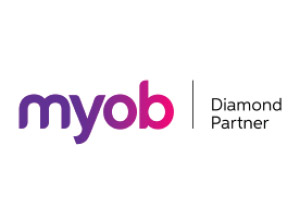Gain greater visibility in your supply chain with Inventory KPIs
Support your business goals and implement processes to gain a competitive advantage by leveraging inventory KPIs.What are inventory Key Performance Indicators (KPIs)?
Consumers’ ever-changing preferences necessitate the importance of effective inventory management. Organisations must anticipate and respond swiftly to shifts in consumer preferences and market trends. Leveraging Key Performance Indicators (KPIs) becomes pivotal for organisations to monitor and optimise inventory for efficient operations and strategic decision-making. Analysing KPIs helps companies make well-informed, data-driven choices that increase efficiency and optimise inventory.
KPIs are quantifiable metrics that help businesses measure their performance and progress towards specific goals. By quantifying progress, identifying bottlenecks, and encouraging continuous improvement, they instil a sense of direction and purpose in the business landscape. Regarding inventory management, KPIs offer valuable insights and provide a clearer picture of your inventory’s health and efficiency and help you take control of stock control. Specific inventory KPIs vary depending on the industry, inventory size and value, and overall business goals.
Common KPIs for inventory-based organisations:
- Inventory turnover rate: Measures the number of times in any given period that the current inventory level is expected to be rotated, usually 12 months. You can use the inventory rate to determine if a business has too much inventory compared to how much of its stock is selling.
- Stock-Out Rate: Measures the frequency at which you run out of stock for individual items. Reducing stock-outs boosts sales and customer satisfaction.
- Carrying cost of inventory: Calculates the cost of holding inventory over a specific period, including storage, handling, and insurance costs.
- Fill rate: The percentage of orders a company can fulfil without lost sales, backorders, or stock-outs. This is an important indicator of customer satisfaction and essential in understanding how effectively the supply chain operates to meet order demands. There are multiple types of fill rate KPIs: order fill rate, case fill rate, warehouse fill rate and vendor fill rate.
- Lead time: Measures the time between when an order is placed and when it becomes available stock on hand.
- Supplier Performance: Monitors and measures supplier performance to find which of your suppliers deliver on time and in full.
- Perfect Order Rate: The percentage of orders processed with no errors and the correct inventory amount.
Why are inventory KPIs important?
KPIs provide visibility into your inventory holdings and contribute to optimising inventory levels, improving forecasting accuracy, and reducing operational costs. Analysing KPIs and modifying strategies based on those KPIs help maintain the correct stock levels. Get ahead of demand planning trends to reduce stock-outs and excess stock and improve efficiency.
What’s the impact of not having inventory KPIs in place?
Lacking proper visibility is the number one challenge. Without inventory KPIs, your business navigates the uncertain waters of supply and demand without direction. This situation risks planning inefficiency and financial vulnerabilities. With the aid of inventory KPIs, your inventory’s precise quantities and whereabouts remain clear at any point in time.
Other inefficiencies for inventory-based organisations:
- Increased costs: Poor inventory management can lead to increased carrying costs. Holding excess inventory ties up capital and incurs expenses related to storage, insurance, and obsolescence expenses.
- Stock-outs: Not having available stock on hand can result in lost sales and dissatisfied customers, impacting your revenue and reputation. Smart software solutions can transform stock-outs into stock-ins before they cause a problem.
- Poor operations management: Tracking inventory turnover, order fulfilment rates, and lead times can be challenging without a dedicated solution. The lack of data hinders your ability to optimise supply chain processes.
- Inaccurate forecasting: If you lack the necessary data, it becomes difficult to predict demand patterns accurately, leading to potential overproduction or underproduction of goods.
- Poor customer service: Inadequate inventory management can lead to frequent stock-outs, delayed deliveries, and incorrect shipments, negatively impacting customer satisfaction and loyalty.
- Missed opportunities: You may need help quickly identifying slow-moving or obsolete items. Consequently, you might miss opportunities to liquidate excess inventory or optimise product offerings.
- Difficulty in identifying problems: Inventory KPIs are historical measurements of past performance. Long term analysis can show trends, helping you identify potential issues within your supply chain. Without them, you may struggle to recognise problems until they increase into more significant challenges.
How to select the right inventory KPIs for your business
It’s essential to implement the appropriate inventory KPIs to best support your business goals and implement processes to ensure you can regularly monitor and analyse the relevant data.
Define clear objectives
Identify the specific goals and objectives you want to achieve through your inventory management. For example, reducing stock-outs, optimising inventory turnover, minimising carrying costs, and improving order fulfilment.
Choose relevant KPIs
Select KPIs that align with your objectives and provide meaningful insights into your inventory performance, such as stock holding, fill rate, and lead time.
Set measurable targets
Establish realistic and measurable targets to gauge your performance and progress over time. Ensure the targets are attainable and align with your business’s overall strategy.
Implement inventory planning software
Invest in inventory management software like Netstock that accurately monitors, measures, and reports on the selected KPIs. Automated processes ensure data accuracy and save time in generating analysis reports.
Review your inventory KPIs weekly or monthly to stay on top of your inventory performance. Analyse trends, identify areas for improvement and take actionable steps to address any issues or inefficiencies in your inventory management process.
Kilimanjaro Consulting is the premier implementing partner of MYOB Advanced and MYOB Exo across Australia and New Zealand. We are experts at integrating third-party freight solutions into your MYOB ERP to improve efficiency.

Netstock Predictive Planning Suite
Download nowDemand Forecasting for Supply Chains
Accurate demand forecasting is an essential tool for companies to anticipate, adapt, and exceed the demands of both customers and the market. To achieve this, organisations must embrace advanced techniques to get ahead of market trends, optimise inventory levels, and ensure timely product availability to meet demand.
Watch our free webinar recording to delve into how demand forecasting can transform your approach to building your inventory strategy.
To start a conversation about using KPIs to gain greater visibility in your supply chain, email samacs@kilimanjaro-consulting.com or call 1300 857 464 (AU) or 0800 436 774 (NZ).
























